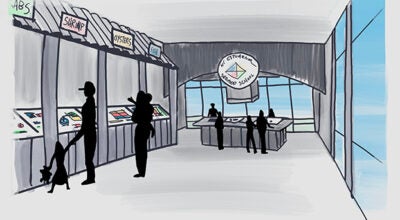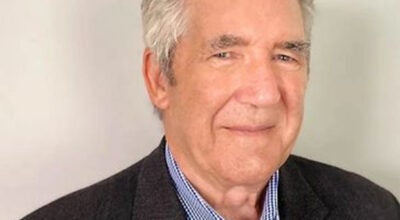Study questions CT scans to rule out heart attacks
Published 9:24 pm Wednesday, July 25, 2012
By MARILYNN MARCHIONE
AP Chief Medical Writer
If you’re having chest pains, an advanced type of CT scan can quickly rule out a heart attack. New research suggests this might be good for hospitals, but not necessarily for you.
These heart scans cut time spent in the hospital but didn’t save money, the study found. They also prompted more tests and questionable treatments and gave relatively large doses of radiation to people at such low risk of a heart attack that they probably didn’t need a major test at all.
There is no evidence that adding these tests saved lives or found more heart attacks, wrote Dr. Rita Redberg, a cardiologist at the University of California, San Francisco in an editorial. Her commentary accompanied the study in Thursday’s New England Journal of Medicine. And since radiation from the scans can raise the long-term risk of developing cancer, doctors “may legitimately ask whether the tests did more harm than good,” she wrote.
Let’s be clear: None of this changes the advice to seek help quickly if you’re having chest pain or other signs of a heart attack. Any delay raises the risk of permanent heart damage.
But more than 90 percent of the 6 million people who go to hospitals each year in the U.S. with chest pain have indigestion, stress, muscle strain or some other problem — not heart disease. Doctors are afraid of missing the ones who do have it, and increasingly are using CT scans — a type of X-ray — with an injected dye to get detailed views of arteries.
More than 50,000 of these scans were done in Medicare patients in 2010, and their use is growing. Far more than that were done in younger patients like the ones in this study, who were 54 years old, on average.
The test requires a substantial dose of radiation, which can raise the risk of cancer years down the road. In some cases, patients might just be told that a doctor wants the test. They may be too frightened to question it or unaware they can refuse or ask about other testing options without jeopardizing their care.
The aim of the study was to see whether these heart scans, called coronary CT angiography, were faster, better or less expensive than usual care, such as simpler tests or being kept a while for observation.
Researchers led by Dr. Udo Hoffmann at Massachusetts General Hospital enrolled 1,000 patients who went to one of nine hospitals around the country during regular daytime, weekday hours with chest pain or other possible heart attack symptoms. All showed no clear sign of a heart attack on initial tests — an electrocardiogram and blood work.
They were randomly assigned to further evaluation either with a CT angiography scan or whatever is standard at that hospital, such as a treadmill or other heart tests.
Those given the CT scans spent an average of 23 hours in the hospital versus 30 hours for the others. More patients given the scans were sent home directly from the emergency room rather than being admitted — 47 percent versus 12 percent.
“Identifying the underlying cause of chest pain more quickly with CT scans could allow medical care providers to better allocate limited resources to the patients who are most in need of treatment” while letting others go home faster, said a statement by Dr. Susan Shurin, acting director of the National Heart, Lung, and Blood Institute, which sponsored the study.
However, the average cost of care was $4,289 for patients given the CT scans versus $4,060 for the others, despite spending seven hours less in the hospital. That’s because CT scans led to more follow-up tests and treatments, even though the burden of disease was about the same; 8 percent of both groups turned out to have heart disease and only 5 of the 1,000 had had a heart attack.
In the CT group, 29 patients wound up getting a heart bypass or artery-opening angioplasty and stent procedures versus 18 patients in the usual care group.
That suggests overtreatment, said Dr. W. Douglas Weaver, a former American College of Cardiology president from Henry Ford Hospital in Detroit.
“If you look more, you’ll find more, and the more you’ll do” to treat whatever is found, said Weaver, who had no role in the study. He also said time in the hospital seemed unusually long for both groups — most hospitals have protocols to evaluate such cases within 12 hours.
Furthermore, patients fared the same in the month after their ER visit regardless of how the hospital evaluated them for chest pain. No heart attacks were missed, and no one died.
Those given CT scans had nearly triple the amount of radiation — about 14 millisieverts (a measure of dose) versus less than 5 millisieverts for the others, some of whom received tests requiring less radiation.
“Exposures of 10 millisieverts have been projected to lead to 1 death from cancer per 2,000 persons,” Redberg wrote in her editorial.
“Equally alarming, the testing may lead to an increased risk of breast cancer among these patients, many of whom are middle-aged women.”
Radiation risks are a growing concern — Medicare’s HospitalCompare website recently started adding information on inappropriate radiation exposure rates at the hospitals it tracks.
Many study authors have consulted for imaging device makers and radiology groups.
A much larger study comparing CT scans and other tests for evaluating heart risks in 10,000 patients is under way now, but it won’t provide answers for several years.
In the meantime, a patient’s gender, age, and history of chest pain or other illnesses such as diabetes go a long way toward predicting risk as long as the initial EKG and blood work suggest no problem, Redberg contends.
“With no evidence of benefit and definite risks, routine testing in the emergency department of patients with a low-to-intermediate risk…should be avoided,” she wrote. “The question is not which test leads to faster discharge of patients from the emergency department, but whether a test is needed at all.”





